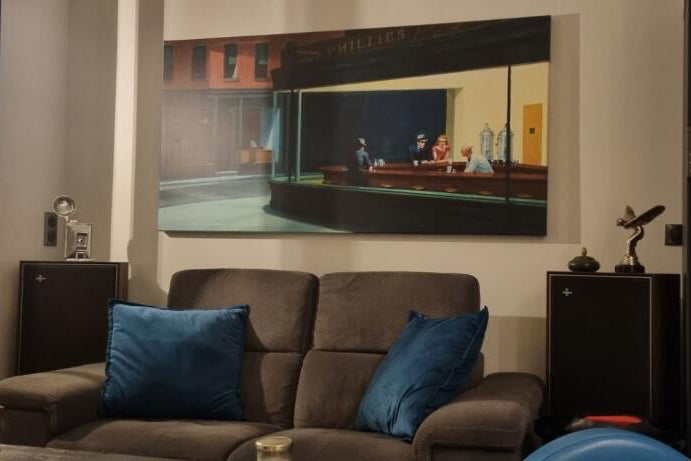Art print | Country inn with horse and cart - Isaac van Ostade


View from behind

Frame (optional)
In the enchanting world of 17th-century Dutch painting, the art print "Country Inn with Horse and Cart" by Isaac van Ostade stands out for its ability to capture moments of everyday life with remarkable finesse and sensitivity. This picturesque scene, where nature and humanity intertwine, invites the viewer to immerse themselves in a rural world filled with serenity. The soft light bathing the scene evokes the golden hours of late afternoon, where the calm of the landscapes blends with human activity, creating a harmonious balance. Through this art print, the artist manages to convey a warm, almost nostalgic atmosphere that resonates with the era's quest for simplicity and authenticity.
Style and uniqueness of the work
Isaac van Ostade's style is characterized by meticulous attention to detail and a rich, nuanced color palette. In "Country Inn with Horse and Cart," there is an undeniable mastery of light and shadow, which gives the composition striking depth. The figures, though modest in their depiction, are animated by a palpable inner life, each seeming to tell a unique story. The artist skillfully plays with textures, whether in the rendering of the peasants' clothing or the surrounding vegetation, creating a tactile atmosphere. This art print is not merely a simple representation of an inn; it is an invitation to explore the nuances of human existence within a bucolic setting, a tribute to the beauty of everyday scenes.
The artist and his influence
Isaac van Ostade, born in 1621 in Haarlem, is one of the masters of landscape and genre scenes of his time. A pupil of Frans Hals, he developed a distinctive style that combines realism and poetry. His works, often inspired by rural life, reflect a deep connection with nature and admiration for simple people. Van Ostade influenced many artists of his era, notably through his ability to incorporate narrative elements into his landscapes, transforming each painting into a visual story. His approach paved the way

Matte finish

View from behind

Frame (optional)
In the enchanting world of 17th-century Dutch painting, the art print "Country Inn with Horse and Cart" by Isaac van Ostade stands out for its ability to capture moments of everyday life with remarkable finesse and sensitivity. This picturesque scene, where nature and humanity intertwine, invites the viewer to immerse themselves in a rural world filled with serenity. The soft light bathing the scene evokes the golden hours of late afternoon, where the calm of the landscapes blends with human activity, creating a harmonious balance. Through this art print, the artist manages to convey a warm, almost nostalgic atmosphere that resonates with the era's quest for simplicity and authenticity.
Style and uniqueness of the work
Isaac van Ostade's style is characterized by meticulous attention to detail and a rich, nuanced color palette. In "Country Inn with Horse and Cart," there is an undeniable mastery of light and shadow, which gives the composition striking depth. The figures, though modest in their depiction, are animated by a palpable inner life, each seeming to tell a unique story. The artist skillfully plays with textures, whether in the rendering of the peasants' clothing or the surrounding vegetation, creating a tactile atmosphere. This art print is not merely a simple representation of an inn; it is an invitation to explore the nuances of human existence within a bucolic setting, a tribute to the beauty of everyday scenes.
The artist and his influence
Isaac van Ostade, born in 1621 in Haarlem, is one of the masters of landscape and genre scenes of his time. A pupil of Frans Hals, he developed a distinctive style that combines realism and poetry. His works, often inspired by rural life, reflect a deep connection with nature and admiration for simple people. Van Ostade influenced many artists of his era, notably through his ability to incorporate narrative elements into his landscapes, transforming each painting into a visual story. His approach paved the way










